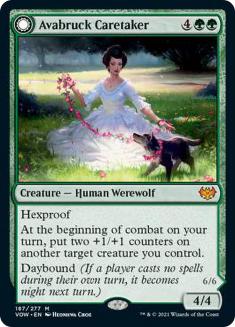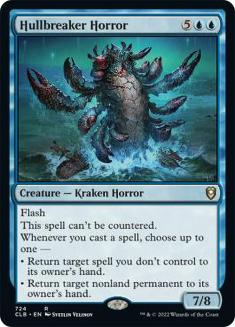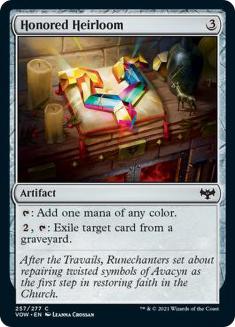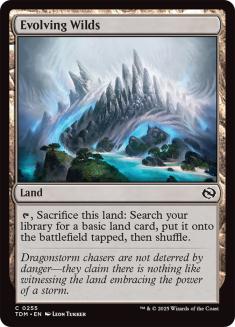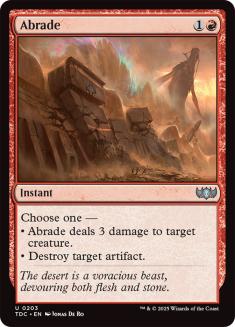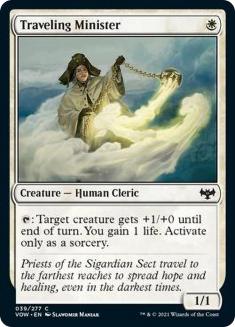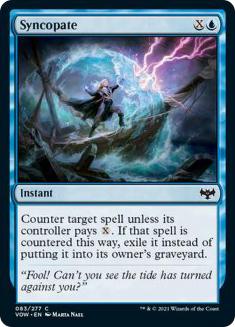This coming weekend I’ll be heading to Las Vegas for my first large paper Magic event since 2019, where I’ll be playing Innistrad: Crimson Vow Sealed. I’m not very concerned with competitive Magic these days, but as someone who’s been completely focused on Limited Magic for a long time, it would definitely feel good to put up a good finish at my first Limited tournament back.
I draft a lot more than I play Sealed, but I made sure to play a Sealed event on Arena before writing this to see if anything stood out. I went undefeated with what I think was a fairly average Rakdos deck, but that experience won’t be the focus on my analysis here.
I’ll start with the big-picture things you need to know about Innistrad: Crimson Vow Limited.
1. This Format Is Bomb-Heavy
Rares are more likely to determine games in this format than they are in most recent sets. I want to be clear that this isn’t a complaint; it’s just a factual statement about the cards and how they play. I’m not saying this based on certain cards I think are “too strong.” I’m saying this based on early trends in the data (from 17Lands.com as always). The gap between the win rates of the best commons and the average playable commons is smaller than it is in most sets, and there are more rares with bigger gaps in win rates between them and the average.
“Prince” formats — those seen as driven by bombs — are often criticized, as players feel like success is out of their hands and more likely to depend on which cards they open. I have a less negative view of this dynamic. The Top 5 or so cards in a set are often called “unbeatable,” but in reality they have a win rate of around 65% when drawn in Sealed, and decks that play them win around 57% of the time, both on 17Lands, where the average win rate is 52%, meaning that having such a card in a deck only improves a player’s chance of winning by around 5%. That’s a huge impact for a single card, but it’s far from insurmountable. I actually like playing against really powerful cards because they’re so satisfying to beat when you do win.
2. Colors Are More Balanced Than Recent Formats
I don’t think it’s a coincidence that these two things are true at the same time. I think that when most games are won by commons, it’s very hard to balance a set because whichever commons are the best will show up frequently enough that they’ll usually determine games. So if one color’s commons are better than the other colors, that color will win a lot more. In a format that’s determined by bombs, as long as each color has a few bombs that usually win, a deck of any color can win by drawing their bomb, and stronger commons in one color won’t matter.
How can it be a good thing that most of the cards in a game don’t matter? Well, I think they do matter; they’re just not the whole story. The rares create enough noise that the differences between commons are minimized. The result is that all the colors are played comparably often because people play whichever commons they need to to support their rares rather than always playing the color with the best commons.
Why is that important? Why does it make for a good format? Well, it means you play with and against a wider range of cards. In Adventures in the Forgotten Realms, it could get boring to have a Rakdos Treasure deck in most games, and in Innistrad: Midnight Hunt a lot of games were decided by flooding the battlefield with Zombies thanks to Organ Hoarder and Diregraf Horde. In Innistrad: Crimson Vow, any two games are more likely to revolve around a completely different set of parameters because there will be a wider range of colors and strategies represented, and sometimes a single powerful card will force the game to be about it.
So what does this mean for you as a player?
It means you should keep an open mind about what you’re going to play. There have been some formats where a vast majority of Sealed pools wanted to play certain colors because so many of the cards in those colors were just better than the cards in the other colors. That’s not how I’d suggest approaching Innistrad: Crimson Vow Sealed. This isn’t “try to build Rakdos if you can;” it’s “try to find the best way to use your strongest cards.”
3. That Said, Mardu Colors Are Stronger Than Simic Colors
This follows logically from the idea that games are most likely to be determined by rares. The colors with better removal perform better than the colors with worse removal. Sample sizes available for win rates by color in Sealed Deck on 17Lands are small at the moment, but Simic is appreciably behind all the two-color pairs, and every pair of Mardu colors is ahead of every deck that uses blue or green. Again, that doesn’t mean you shouldn’t play blue or green if you have bombs in those colors, but it means that if you’re not sure what color to pair with a color that gives you access to your strongest bombs, you should try to err toward the color that gives you the best removal.
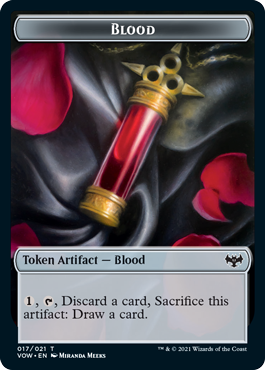
Another factor that leads to black and red performing well in this Sealed format is Blood tokens. If the format is primarily about finding your bombs and using removal to answer your opponents’ bombs, cards that allow you to dig for those bombs and removal spells are very strong. Also, if everyone knows that removal is important, the games are likely to revolve around attrition, and in a format where there isn’t a lot of raw card advantage in colors that have good removal, attrition is largely going to be a function of which player floods less, and Blood tokens help mitigate flood by allowing you to discard excess lands.
4. Let’s Talk Splashing
When trying to maximize rares and removal, it can be easy to conclude that the right approach is to splash extra colors to play another rare or another few removal spells. I’d caution against doing that most of the time in this format. While there are a reasonable number of cards that can help fix, a vast majority of them cost three mana. This format isn’t generally slow enough that taking your third turn off to cast a mana source is going to be a good strategy.
If you do want to do that, you need to make sure that you have the right curve, which is to say you want to make sure you have plenty of defensive two-mana plays that make sure that you won’t fall too far behind, and that you have more five-mana plays than four-mana plays (if you’re playing multiple three-mana mana sources) to make sure that you can take advantage of the extra mana as soon as possible.
Playing these mana-fixing cards means that you’re going to have more mana sources in your deck than your opponent, which means that you’re more likely to flood out than them. If you play expensive creatures that they can answer with a single removal spell, you’ll experience the worst version of this — you want to make sure that the expensive spells you’re playing are generating clean card advantage even if your opponent has a removal spell, but you don’t want to do that by playing card draw spells, because that implies that you’re spending too much mana without impacting the battlefield between casting your ramp spell and your card draw. There aren’t very many cards in this format that meet these criteria, which is why I think you generally want to try to play a two-color deck.
Evolving Wilds is the best card to help you fix, and if you have exceptional fixing like Reclusive Taxidermist, there are certainly Sealed pools where it’s correct to play extra colors, but most of the time you should try to stick to two-color decks with a good curve and good synergy to support your best cards.
5. Be Proactive
Remember that this is a format with a large number of bombs, so even if you have multiple bombs yourself, you can’t be sure that your bombs are stronger than your opponents’, especially late in the day if you’re doing well. The best way to win a game against the strongest bombs is to kill your opponent before they draw/cast them, so you’ll generally want to play a deck that can pressure the opponent and end a game sooner rather than later.
6. Play or Draw?
Whether it’s correct to choose to draw in Sealed has been a contested issue for a long time, and while it might have been better to draw with older sets, data from 17Lands suggests that it’s generally around 1-2% better to be on the play. Note that being on the play is better on Arena Best-of-One than it is in paper Best-of-Three because of the hand smoother, but even in traditional Sealed without the hand smoother, the player on the play wins more, but they have a less than 1% edge. What that means is that, when in doubt, you should choose to play, but the edge is very small, which means that something about your deck or the matchup could easily mean that you should choose to draw instead.
So what kinds of decks want to choose to draw? The more cheap removal you have, the more you want to choose to draw. If you have cheap removal, you can force a game to be about attrition rather than tempo, and when you do that, the extra card matters more than the extra turn, but if you’re trying to cast expensive spells to turn the momentum in a game or you’re trying to attack, you want to be on the play.
If the strength of your pool is that you have a lot of Abrades, you should seriously consider choosing to draw. Also, the more spells you have that draw cards, the more you want to be on the play, because you can spend that extra turn to make up the extra card, while you won’t want to be too far behind to be able to afford to cast your card draw spell.
Other Notes
White performs exceptionally well in Sealed, and notably, the lifegain cards overperform, with Traveling Minister, Heron of Hope, and Kindly Ancestor all performing very well. These kinds of cards offer a strong cushion that allows you to use your removal more judiciously, which is essential. Also, while I generally don’t like Auras that stop creatures from attacking, this isn’t a format where you can avoid Sigarda’s Imprisonment. One issue with Pacifism-style cards is that they don’t remove abilities on creatures, but for five additional mana, Sigarda’s Imprisonment exiles the creature and that makes a big difference for this kind of card. Also, despite exploit existing in the set, there aren’t that many cards that really punish you for using this kind of removal.
If you’re going to play blue, you should almost certainly play your counterspells. Counterspells are often good in Sealed because they answer expensive bombs well, and that’s going to be particularly true in this format, In Innistrad: Crimson Vow Draft, I like to focus on evasive creatures and try to be aggressive in blue decks, but in Sealed you’re probably going to want to lean more on counterspells and Scattered Thoughts in most blue decks.
That’s all I have so far. It’s early in the format and I’m learning it in real time. If you’ll be in Las Vegas, good luck and feel free to say hi.


